186 books about Present and 13
start with H
186 books about Present and 13
186 books about Present
13 start with H start with H
13 start with H start with H

The Heart of the Lakes
Freshwater in the Past, Present and Future of Southeast Michigan
Dave Dempsey
Michigan State University Press, 2019
The water corridor that defines southeast Michigan sits at the heart of the world’s largest freshwater ecosystem, the Great Lakes. Over forty-three trillion gallons of water a year flow through the Detroit River, providing a natural conduit for everything from fish migration to the movement of cargo-bearing one thousand–foot freighters, and a defining sense of place. But in both government policies and individual practices, the freshwater at the heart of the lakes was long neglected and sometimes abused. Today southeast Michigan enjoys an opportunity to learn from that history and put freshwater at the center of a prosperous and sustainable future. Joining this journey downriver in place and time, from Port Huron to Monroe, from the 1600s to the present, provides insight and hope for the region’s water-based renaissance.
[more]
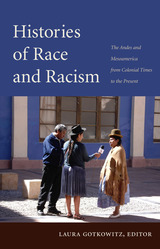
Histories of Race and Racism
The Andes and Mesoamerica from Colonial Times to the Present
Laura Gotkowitz, ed.
Duke University Press, 2012
Ninety percent of the indigenous population in the Americas lives in the Andean and Mesoamerican nations of Bolivia, Ecuador, Mexico, Peru, and Guatemala. Recently indigenous social movements in these countries have intensified debate about racism and drawn attention to the connections between present-day discrimination and centuries of colonialism and violence. In Histories of Race and Racism, anthropologists, historians, and sociologists consider the experiences and representations of Andean and Mesoamerican indigenous peoples from the early colonial era to the present. Many of the essays focus on Bolivia, where the election of the country’s first indigenous president, Evo Morales, sparked fierce disputes over political power, ethnic rights, and visions of the nation. The contributors compare the interplay of race and racism with class, gender, nationality, and regionalism in Bolivia, Ecuador, Guatemala, Mexico, and Peru. In the process, they engage issues including labor, education, census taking, cultural appropriation and performance, mestizaje, social mobilization, and antiracist legislation. Their essays shed new light on the present by describing how race and racism have mattered in particular Andean and Mesoamerican societies at specific moments in time.
Contributors
Rossana Barragán
Kathryn Burns
Andrés Calla
Pamela Calla
Rudi Colloredo-Mansfeld
María Elena García
Laura Gotkowitz
Charles R. Hale
Brooke Larson
Claudio Lomnitz
José Antonio Lucero
Florencia E. Mallon
Khantuta Muruchi
Deborah Poole
Seemin Qayum
Arturo Taracena Arriola
Sinclair Thomson
Esteban Ticona Alejo
[more]

Histories of the Present
People and Power in Ecuador
Norman E. Whitten Jr. and Dorothea Scott Whitten
University of Illinois Press, 2011
The wellspring of critical analysis in this book emerges from Ecuador's major Indigenous Uprising of 1990 and its ongoing aftermath in which indigenous and Afro-Ecuadorian action transformed the nation-state and established new dimensions of human relationships. The authors weave anthropological theory with longitudinal Ecuadorian ethnography to produce a unique contribution to Latin American studies.
[more]

A History of Argentina
From the Spanish Conquest to the Present
Ezequiel Adamovsky
Duke University Press, 2024
In A History of Argentina, originally published in Spanish in 2020, Ezequiel Adamovsky presents over five hundred years of Argentine economic, political, social, and cultural history. Adamovsky highlights the experiences of women, Indigenous communities, and other groups that have traditionally been left out of the historical archive. He focuses on harmful aspects of Spanish colonization such as gender subjugation, the violence enacted in the name of the Catholic Church, the role of the economy as it shifted from the encomienda system into modern industrialization, and the devastating effects of slavery, violence, and disease brought to the region by Spanish colonizers. Adamovsky also discusses Argentina’s independence and territorial consolidation, the first democratic elections in 1916, military coups, Peronism, democratization and the neoliberal reforms of the 1980s, and many other facets of Argentine life up to the 2019 presidential election. Concise, accessible, and comprehensive, A History of Argentina is an essential guide to this nation.
[more]

The History of Inequality
From the Industrial Revolution to the Present
Daniel Waldenström and Jesper Roine
Harvard University Press

A History of Money in Palestine
From the 1900s to the Present
Sreemati Mitter
Harvard University Press

A History of Negro Education in the South
From 1619 to the Present
Henry Allen Bullock
Harvard University Press
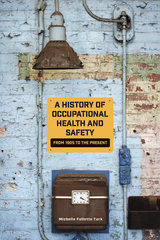
A History of Occupational Health and Safety
From 1905 to the Present
Michelle Follette Turk
University of Nevada Press, 2018
The United States has a long and unfortunate history of exposing employees, the public, and the environment to dangerous work. But in April 2009, the spotlight was on Las Vegas when the Pulitzer committee awarded its public service prize to the Las Vegas Sun for its coverage of the high fatalities on Las Vegas Strip construction sites. The newspaper attributed failures in safety policy to the recent “exponential growth in the Las Vegas market.” In fact, since Las Vegas’ founding in 1905, rapid development has always strained occupational health and safety standards.
A History of Occupational Health and Safety examines the work, hazards, and health and safety programs from the early building of the railroad through the construction of the Hoover Dam, chemical manufacturing during World War II, nuclear testing, and dense megaresort construction on the Las Vegas Strip. In doing so, this comprehensive chronicle reveals the long and unfortunate history of exposing workers, residents, tourists, and the environment to dangerous work—all while exposing the present and future to crises in the region. Complex interactions and beliefs among the actors involved are emphasized, as well as how the medical community interpreted and responded to the risks posed.
Few places in the United States contain this mixture of industrial and postindustrial sites, the Las Vegas area offers unique opportunities to evaluate American occupational health during the twentieth century, and reminds us all about the relevancy of protecting our workers.
A History of Occupational Health and Safety examines the work, hazards, and health and safety programs from the early building of the railroad through the construction of the Hoover Dam, chemical manufacturing during World War II, nuclear testing, and dense megaresort construction on the Las Vegas Strip. In doing so, this comprehensive chronicle reveals the long and unfortunate history of exposing workers, residents, tourists, and the environment to dangerous work—all while exposing the present and future to crises in the region. Complex interactions and beliefs among the actors involved are emphasized, as well as how the medical community interpreted and responded to the risks posed.
Few places in the United States contain this mixture of industrial and postindustrial sites, the Las Vegas area offers unique opportunities to evaluate American occupational health during the twentieth century, and reminds us all about the relevancy of protecting our workers.
[more]
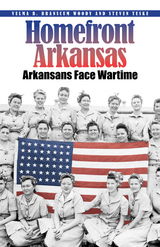
Homefront Arkansas
Arkansans Face Wartime Past and Present
Velma B. Branscum Woody
Butler Center for Arkansas Studies, 2009
For almost two hundred years, Arkansans have been part of America’s struggle to maintain democracy and keep the peace at home and around the globe. Homefront Arkansas: Arkansans Face Wartime Past and Present shows how war has affected those at home as well as those who served as soldiers. The chapters include: * A wounded Civil War soldier stumbles onto a homestead after a battle at Poison Springs, Arkansas, forever changing the family there * In 1875, Arkansans take sides in the Brooks-Baxter War, involving two men each claiming to be the governor of Arkansas * Arkansas volunteers follow Teddy Roosevelt into the Spanish-American War, and find troops crowded into a filthy camp as they wait to be shipped out * An African American girl leaves her native state to escape persecution, only to find that a world war is threatening to envelop her new home in England Woody’s stories provide a factual and compelling backdrop for Arkansas’s history as seen through its conflicts. Fascinated readers will follow the chronology of Arkansans who met the nation’s call both at home and abroad.
[more]
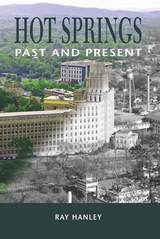
Hot Springs
Past and Present
Ray Hanley
University of Arkansas Press, 2014
A century ago Hot Springs, Arkansas, was a world-renown resort city. Today, the town remains the most unique city in Arkansas but with much of its Victorian-to-1950s views nearly unrecognizable. Hot Springs: Past and Present shows vividly the before and after of hundreds of sites, answering questions such as “What used to be on this corner?” and “What was here before it was a parking lot?” The answer to those questions is often an opulent hotel, a theater, a bathhouse, a gambling house, or a mansion. Fire destroyed many buildings, even more were demolished, and some sites remain not so unlike they used to be. Hot Springs: Past and Present makes a perfect walking companion for anyone visiting the town and wishing to learn more about this one-of-a-kind place through not only the photographs but also the informative text that provides a good overview of the town’s history.
[more]
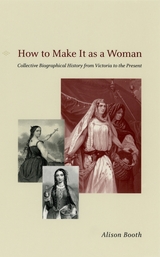
How to Make It as a Woman
Collective Biographical History from Victoria to the Present
Alison Booth
University of Chicago Press, 2004
How to Make It as a Woman outlines the history of prosopography or group biography, focusing on the all-female collections that took hold in nineteenth-century Britain and America. The queens, nurses, writers, reformers, adventurers, even assassins in these collective female biographies served as models to guide the moral development of young women. But often these famous historical women presented untrustworthy examples.
Beginning in the fifteenth century with Christine de Pizan, Alison Booth traces the long tradition of this genre, investigating the varied types and stories most often grouped together in illustrated books designed for entertainment and instruction. She claims that these group biographies have been instrumental in constructing modern subjectivities as well as relations among classes, races, and nations.
From Joan of Arc to Virginia Woolf, Booth examines a host of models of womanhood—both bad and good. Incorporating a bibliography that includes more than 900 all-female collections published in English between 1830 and 1940, Booth uses collective biographies to decode the varied advice on how to make it as a woman.
Beginning in the fifteenth century with Christine de Pizan, Alison Booth traces the long tradition of this genre, investigating the varied types and stories most often grouped together in illustrated books designed for entertainment and instruction. She claims that these group biographies have been instrumental in constructing modern subjectivities as well as relations among classes, races, and nations.
From Joan of Arc to Virginia Woolf, Booth examines a host of models of womanhood—both bad and good. Incorporating a bibliography that includes more than 900 all-female collections published in English between 1830 and 1940, Booth uses collective biographies to decode the varied advice on how to make it as a woman.
[more]
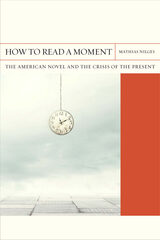
How to Read a Moment
The American Novel and the Crisis of the Present
Mathias Nilges
Northwestern University Press, 2021
In How to Read a Moment, Mathias Nilges shows that time is inseparable from the stories we tell about it, demonstrating that the contemporary American novel offers new ways to make sense of the temporality that governs our present.
“Time is a thing that grows scarcer every day,” observes one of Don DeLillo’s characters. “The future is gone,” The Baffler argues. “Where’s my hoverboard!?” a meme demands. Contemporary capitalism, a system that insists that everything happen at once, creates problems for social thought and narrative alike. After all, how does one tell the time of instantaneity? In this moment of on-demand service and instant trading, it has become difficult to imagine the future.
The novel emerged as the art form of a rapidly changing modern world, a way of telling time in its progress. Nilges argues that this historical mission is renewed today through works that understand contemporaneity as a form of time shaping that props up our material world and cultural imagination. But the contemporary American novel does not simply associate our present with a crisis of futurity. Through analyses of works by authors such as DeLillo, Jennifer Egan, Charles Yu, and Colson Whitehead, Nilges illustrates that the novel presents ways to make sense of the temporality that controls our purportedly fully contemporary world. In so doing, the novel recovers a sense of possibility and hope, forwarding a dazzling argument for its own importance today.
“Time is a thing that grows scarcer every day,” observes one of Don DeLillo’s characters. “The future is gone,” The Baffler argues. “Where’s my hoverboard!?” a meme demands. Contemporary capitalism, a system that insists that everything happen at once, creates problems for social thought and narrative alike. After all, how does one tell the time of instantaneity? In this moment of on-demand service and instant trading, it has become difficult to imagine the future.
The novel emerged as the art form of a rapidly changing modern world, a way of telling time in its progress. Nilges argues that this historical mission is renewed today through works that understand contemporaneity as a form of time shaping that props up our material world and cultural imagination. But the contemporary American novel does not simply associate our present with a crisis of futurity. Through analyses of works by authors such as DeLillo, Jennifer Egan, Charles Yu, and Colson Whitehead, Nilges illustrates that the novel presents ways to make sense of the temporality that controls our purportedly fully contemporary world. In so doing, the novel recovers a sense of possibility and hope, forwarding a dazzling argument for its own importance today.
[more]
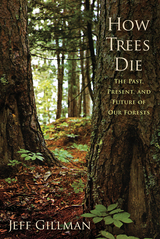
How Trees Die
The Past, Present, and Future of our Forests
Jeff Gillman
Westholme Publishing, 2009
Lessons About Our Environment from the World’s Oldest Living Things
Trees have been essential to the success of human beings, providing food, shelter, warmth, transportation, and products (consider the paper you are holding). Trees are also necessary for a healthy atmosphere, literally connecting the earth with the sky. Once in wild abundance— the entire eastern North America was a gigantic forest—they have receded as we have clearcut the landscape in favor of building cities and farms, using up and abusing our forests in the process. Over the centuries, we have trained food trees, such as peach and apple trees, to produce more and better fruit at the expense of their lives. As Jeff Gillman, a specialist in the production and care of trees, explains in his acclaimed work, How Trees Die: The Past, Present, and Future of Our Forests, the death of a tree is as important to understanding our environment as how it lives. While not as readily apparent as other forms of domestication, our ancient and intimate relationship with trees has caused their lives to be inseparably entwined with ours. The environment we have created—what we put into the air and into the water, and how we change the land through farming, construction, irrigation, and highways—affects the world’s entire population of trees, while the lives of the trees under our direct care in farms, orchards, or along a city boulevard depend almost entirely on our actions. Taking the reader on a fascinating journey through time and place, the author explains how we kill trees, often for profit, but also unintentionally with kindness through overwatering or overmulching, and sometimes simply by our movements around the globe, carrying foreign insects or disease. No matter how a tree’s life ends, though, understanding the reason is essential to understanding the future of our environment.
Trees have been essential to the success of human beings, providing food, shelter, warmth, transportation, and products (consider the paper you are holding). Trees are also necessary for a healthy atmosphere, literally connecting the earth with the sky. Once in wild abundance— the entire eastern North America was a gigantic forest—they have receded as we have clearcut the landscape in favor of building cities and farms, using up and abusing our forests in the process. Over the centuries, we have trained food trees, such as peach and apple trees, to produce more and better fruit at the expense of their lives. As Jeff Gillman, a specialist in the production and care of trees, explains in his acclaimed work, How Trees Die: The Past, Present, and Future of Our Forests, the death of a tree is as important to understanding our environment as how it lives. While not as readily apparent as other forms of domestication, our ancient and intimate relationship with trees has caused their lives to be inseparably entwined with ours. The environment we have created—what we put into the air and into the water, and how we change the land through farming, construction, irrigation, and highways—affects the world’s entire population of trees, while the lives of the trees under our direct care in farms, orchards, or along a city boulevard depend almost entirely on our actions. Taking the reader on a fascinating journey through time and place, the author explains how we kill trees, often for profit, but also unintentionally with kindness through overwatering or overmulching, and sometimes simply by our movements around the globe, carrying foreign insects or disease. No matter how a tree’s life ends, though, understanding the reason is essential to understanding the future of our environment.
[more]
READERS
Browse our collection.
PUBLISHERS
See BiblioVault's publisher services.
STUDENT SERVICES
Files for college accessibility offices.
UChicago Accessibility Resources
home | accessibility | search | about | contact us
BiblioVault ® 2001 - 2024
The University of Chicago Press









